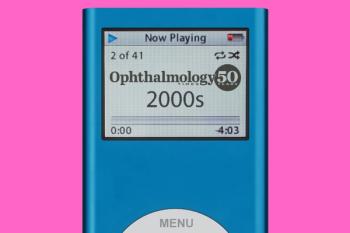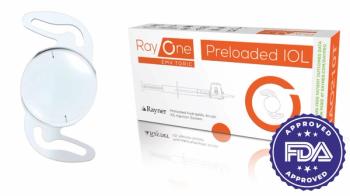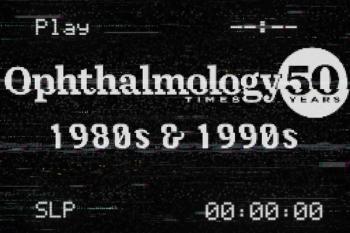
- Ophthalmology Times, March 15 2019
- Volume 44
- Issue 5
Valuing power of the lenticle
Pearls for overcoming pitfalls related to keratometry, prediction of effective lens position, optical biometry
Despite ongoing fine-tuning of the formulas for the optical power of IOLs, errors are still possible, often related to keratometry, prediction of effective lens position, and optical biometry.
Reviewed by Jack T. Holladay, MD, MSEE, FACS
Even after decades of making periodic adjustments and updates to formulas for the
Formulas for the calculation of IOL power have been around since S.N. Fedorov’s original publication of “Estimation of Optical Power of the Intraocular Lens” in 1967.
After keratometry or corneal refractive surgery, the only relevant part of the cornea is the 4.5-mm lenticle, explained Dr. Holladay, clinical professor of ophthalmology, Baylor College of Medicine, Houston. Keratometry measures the front-surface ring of the lenticle-ranging from 2 mm to 3.2 mm depending on the keratometer-using a back radius of 4, 6, or 28 points and presuming a back radius of 82.2% of the front radius.
Inaccuracies related to keratometry
However, for irregular corneas (e.g., post-refractive keratoconus, post-penetrating keratoplasty, and scars), keratometry is inaccurate due to sample size and should be replaced with zonal topography or tomography.
Topography measures the entire front surface of the lenticle, with about 14,000 points, whereas tomography measures the front/back surfaces, using about 40,000 points, Dr. Holladay said.
“What we want is the power of that lenticle, and since the sample size is much better, in both of these conditions (keratoconus and refractive surgery) you should always get topography or tomography,” Dr. Holladay said.
After keratoconus, the cornea becomes a simultaneous bifocal. A bifocal “cap” is formed with 2 to 5 D more power than the paracentral power within the pupil. “What you want is the paracentral power that’s in the pupil,” he said.
“The cap gives you reading power, just like a bifocal intraocular lens. Patients don’t look through the average, and that’s what the keratometer is going to give you. You have to move that mouse around in the paracentral area to get an average value and avoid the cone, because that’s for reading; it’s not for distance vision.”
However, in post-refractive surgery, the cornea is not a bifocal. It is flattest in the center of the cornea following myopic surgery and steepest in the center after hyperopic surgery. If it was centered on the pupil it will be decentered relative to the visual axis. The pupil size is critical, and the key is to find the power within the zone. If the pupil is smaller than average, the power has to be customized.
Effective lens position
Another pitfall is that the prediction of effective lens position is inaccurate if using keratometry; neither the cap power nor the flattened cornea after myopic refractive surgery will size the eye correctly, Dr. Holladay said.
Rather, the “double K method” is more reliable. Use keratometry before refractive surgery or the paracentral power in keratoconus to estimate the size of the anterior segment, then use the refractive vergence power measured with zonal power.
Optical biometry
A third source of errors is optical biometry. It can yield imprecise results in long eyes (>25 mm), which are common in refractive surgery and keratoconus, thus the axial length must be shortened with all formulas. The error resulted more than a decade ago from calibrations made for OCT that included eyes up to 26 mm long; calibrations were then extrapolated from 26 to 36 mm.
“If you extrapolate you overestimate the length of the eye, and the eyes are progressively shorter,” he said. “In fact, for a 36-mm eye, it’s really 34.”
A linear regression model to compensate for long eyes was published in 2011 by Wang and Koch, and further axial length adjustment formulas were published in the Journal of Cataract and Refractive Surgery in October 2018.
Disclosures:
Jack T. Holladay, MD, MSEE, FACS
E: [email protected]
This article was adapted from Dr. Holladay’s presentation during Refractive Surgery Subspecialty Day at the 2018 meeting of the American Academy of Ophthalmology. Dr. Holladay did not report any relevant disclosures.
Articles in this issue
over 6 years ago
CAIRS may eliminate complications from synthetic ring segmentsover 6 years ago
Study: RLE, monovision LASIK results similar in 45-60 age groupover 6 years ago
Making the most of diagnostic technology toolkitover 6 years ago
Optical sector must embrace the telemedicine waveNewsletter
Don’t miss out—get Ophthalmology Times updates on the latest clinical advancements and expert interviews, straight to your inbox.



















































.png)


